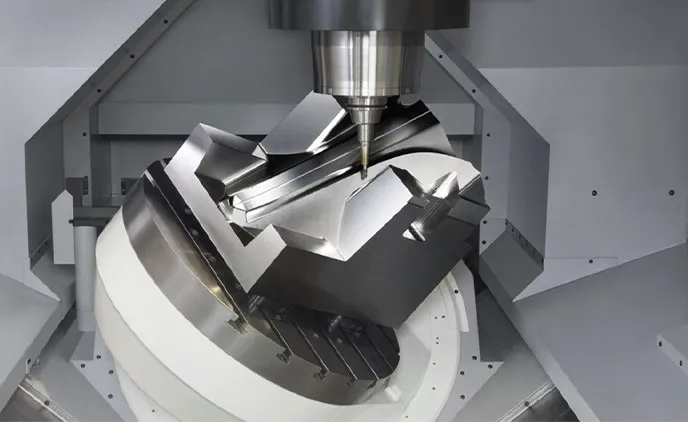316 Stainless Steel vs 304 Stainless Steel: The Ultimate Guide to CNC machining selection (Performance/composition/application comparison)
1 Composition comparison: Core difference between 316 and 304 stainless steel
| ingredient | 304 stainless steel | 316 stainless steel | influence |
| Chromium(Cr) | 18% | 16-18% | Corrosion resistance of foundation |
| Cickel(Ni) | 8-10.5% | 10-14% | Austenite stability |
| Molybdenum(Mo) | None | 2-3% | Resistant to chloride ion corrosion |
| Carbon (C) | ≤0.08% | ≤0.08% | welding property |

2 Key performance comparison (required reading for CNC machining)
2.1 Comparison of corrosion resistance
| Target | 304 stainless steel | 316 stainless steel |
| Chloride ion environment | prone to pitting (critical concentration >200ppm) | chloride ion corrosion resistance (critical concentration >2000ppm) |
| Acid environment | resistance to weak acids (such as acetic acid, citric acid) | strong acids (such as sulfuric acid, phosphoric acid) |
| Salt spray test | rust in 72 hours | no visible corrosion in 1000 hours (ASTM B117) |
Key differences:316 because it contains 2-3% molybdenum (Mo), the formation of a more stable passivation film, pitting resistance is more than 5 times that of 304.
2.2 Mechanical strength comparison
| Parameters | 304 stainless steel | 316 stainless steel |
| strength of extension | 515-620 MPa | 620-795 MPa |
| yield strength | 205 MPa | 310 MPa |
| Hardness(HV) | 130-180 | 160-220 |
Processing impact:
316 Higher strength leads to a 15-20% increase in tool wear, and it is recommended to use carbide tools.
304 ductility is better, suitable for deep stamping (such as kitchen stamping parts).
2.3 Comparison of high temperature performance
| temperature range | 304 stainless steel | 316 stainless steel |
| Continuous operating temperature | ≤870°C (good oxidation resistance) | ≤925°C (high temperature strength is better) |
| Creep strength | 34 MPa at 540°C | 48 MPa at 540°C (40% increase) |
Key differences:
316 is more resistant to vulcanization corrosion in high temperature sulfur-containing environments (such as refinery heat exchangers).
304 high temperature carbide precipitation is easy to occur, need to control the carbon content (304L).
2.4 Comparison of processing costs
| Cost Factor | 304 Stainless Steel | 316 Stainless Steel |
| Raw Material Cost | Base price (~USD 2,500/ton) | 20-30% higher (~USD 3,200/ton) |
| Tool Wear | 1,000 parts per tool lifespan | 700-800 parts per tool lifespan |
| Machining Speed | 120-150 m/min | 90-120 m/min |
Optimization suggestions:
316 machining with highly lubricated coolants (such as sulfur-containing EP additives) can reduce tool loss by 15%.
Small batch parts with 304 more cost advantages, long-term corrosion resistance needs to choose 316.
2.5 Comparison between welding and post-processing
| Process | 304 Stainless Steel | 316 Stainless Steel |
| Weldability | Good (control interpass temperature) | Requires low-carbon version (316L) |
| HAZ Corrosion | Risk of intergranular corrosion | Reduced sensitization risk due to Mo |
| Surface Finish | Electropolishing (Ra ≤0.5 μm) | Sandblasting + passivation for better corrosion resistance |
Industry standard:
Medical implants must be welded according to ASTM F138 (mandatory 316L).
Food equipment should be acid-washed and passivated after welding (in accordance with FDA standards).

3 Comparison of typical application scenarios
304 stainless steel application field:
Food Processing Equipment (FDA approved)
Exterior parts of household appliances
Architectural decoration (Curtain wall/handrail)

316 Stainless steel Preferred scene:
Marine Engineering (Marine shafting/Seawater Valves)
Medical Implants (ASTM F138)
Chemical Industry (Reactor/acid pipeline)

4 Epilogue
In the machining industry, stainless steel is an important material for many projects due to its durability, high machinability, weldability and flexibility. To fully understand the characteristics of the material, advantages, applications, in order to choose the most suitable material for your project, this article briefly introduces these standards, hope to help you, but the better choice is to give your project to a reputable manufacturer, we have a wealth of experience to help you choose the right material, this is the meaning of our existence.
Hong Zhong Xin: The ideal manufacturing partner for every CNC project
Contact us get an instant quote
Hong Zhong Xin is the ideal manufacturing partner to provide top quality CNC machining services. Our company operates in China, a global manufacturing hub, with a proven track record. Our team of experts are able to achieve tolerances accurate to 0.01 mm, covering a range of services from CNC turning and milling to plasma cutting and laser cutting.
Our ability to process stainless steel materials is also world-class, and we have a large number of production experience, If you have production needs, please feel free to give us, we will definitely meet your highest standards.













